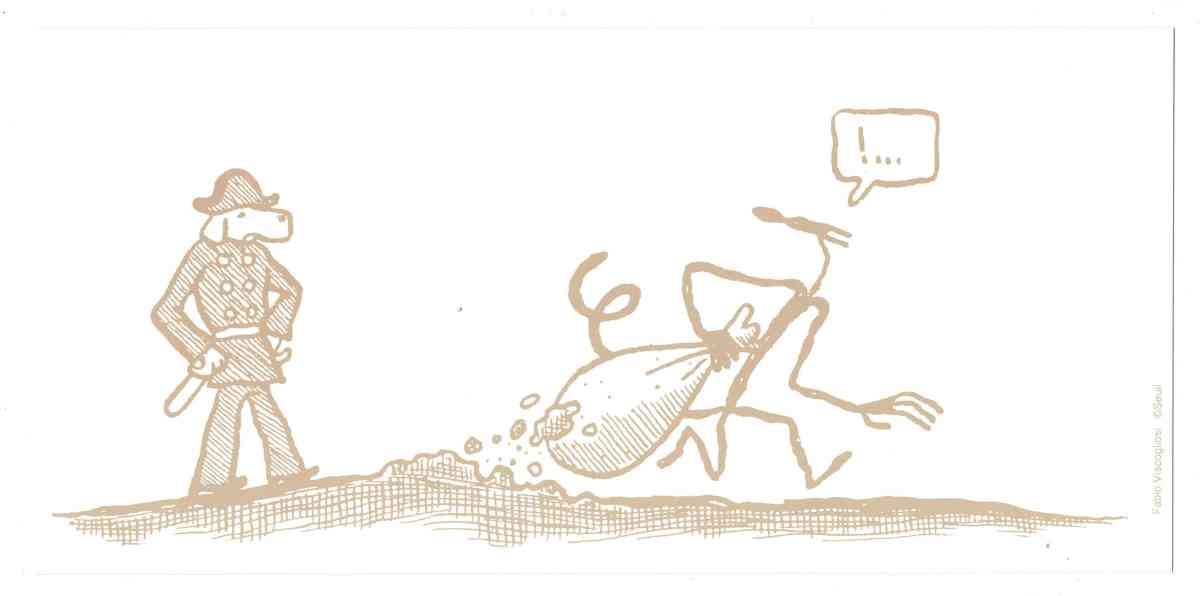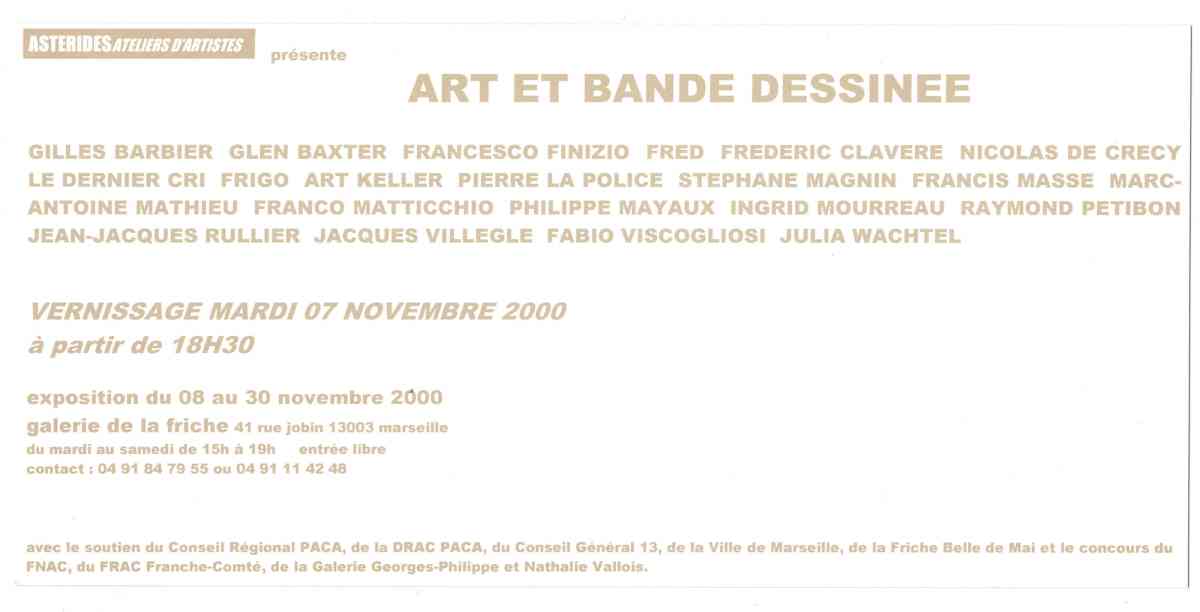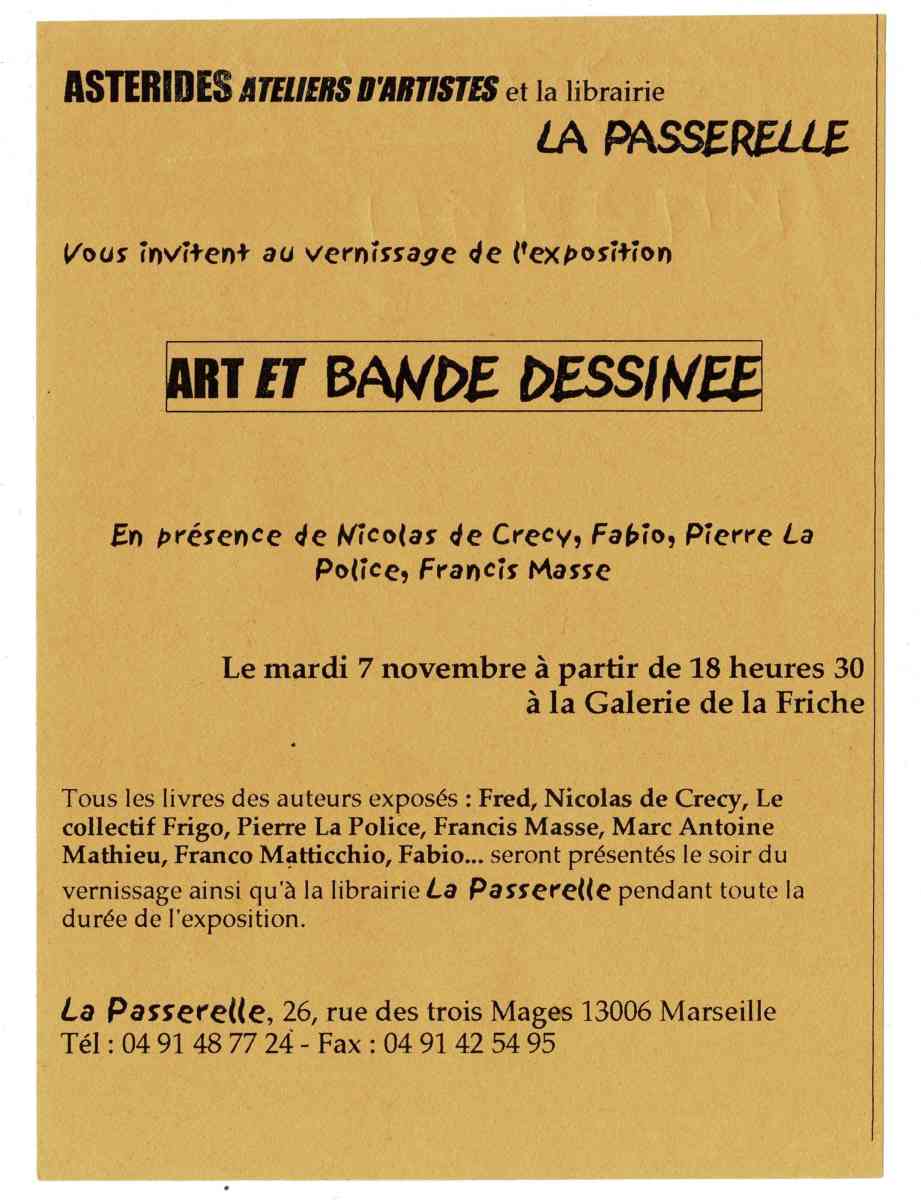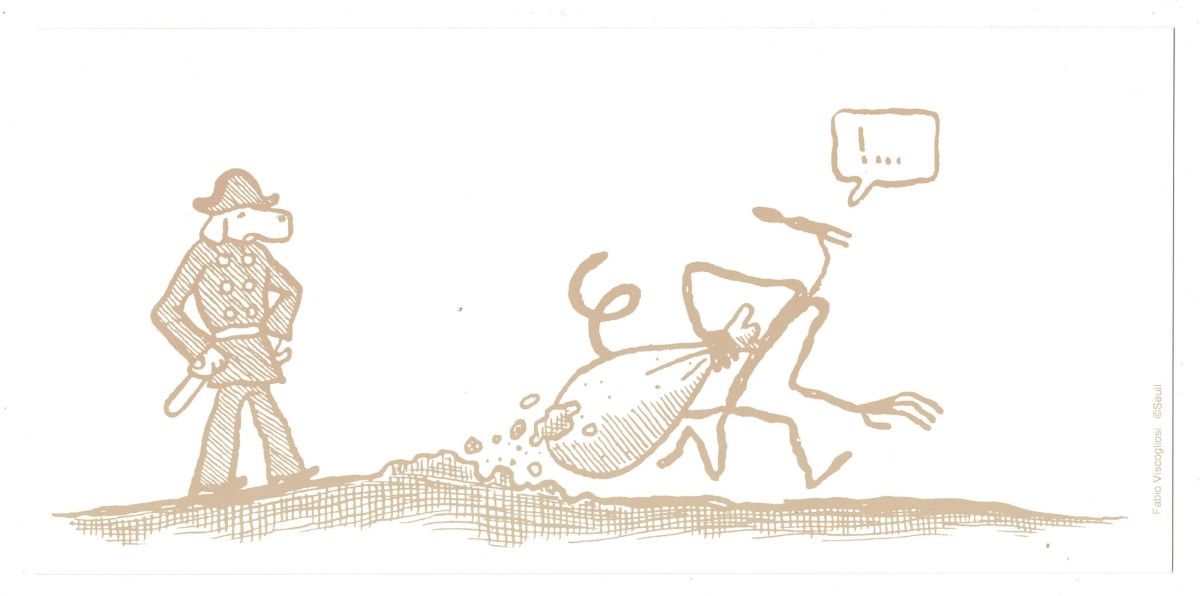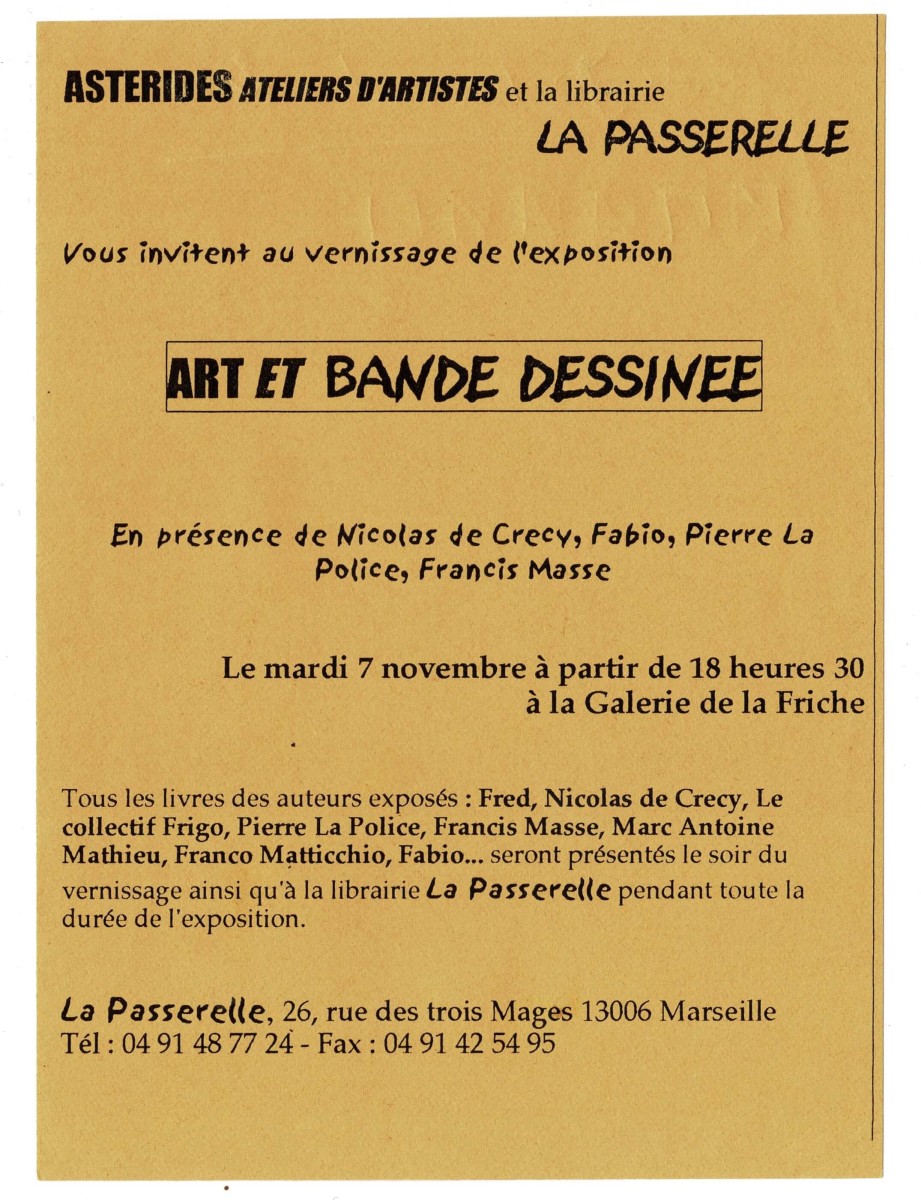Art and comics
Collective show with Gilles Barbier, Glen Baxter, Nicolas de Cercy, Frédéric Clavère, le Dernier Cri, Francesco Finizio, Fred, Frigo, Art Keller, Pierre la Police, Stéphane Magnin, Francis Masse, Marc-Antoine Mathieu, Franco Matticchio, Philippe Mayaux, Ingrid Mourreau, Raymond Petibon, Jean-Jacques Rullier, Fabio Viscogliosi, Jacques Villeglé and Julia Wachtel
An Astérides exhibition
November 8 - 30, 2000
Galerie de la Friche la Belle de Mai, Marseille
Comics have, in the span of a century, managed to shift from an almost underground “low culture” to real recognition. This emancipation has taken place along two lines.
The first, widely accepted, comes from its use and appropriation by artists: whether it’s Kurt Schwitters and his collages of comic characters, pop art and its massive use of the medium, or Bertrand Lavier, to name just a few, or its omnipresence today within artistic practices.
The other line stems from the work of comic book authors themselves. They, on their side, have made storytelling techniques and narrative pacing more complex. They have also embraced appropriation, quotation, and play, while constantly renewing graphic experimentation.
The recoveries and appropriations by the former, combined with the vitality of the latter, have today rendered invisible the boundary between what was, by pure prejudice, considered a “low” and a “high culture.”
During the 1960s, the shift of the popular image from its ghetto to iconic recognition was a process of cultural elevation. Today, borrowings and exchanges occur on equal footing. Some artists make comics or use — and this is important — its structure, its semantics, just as many works by comic book authors enjoy artistic recognition.
From this observation, it seemed appropriate to us to bring together and confront both practices in the same place, the Galerie de la Friche.
From this observation, it seemed appropriate to us to bring together and confront both practices in the same place.
Our intention is to reveal the many bridges that link them, and then, from this union, to draw out a few key issues relevant to understanding contemporary thought: the formalization of time, fiction, narrative space, the question of dialogue, the question of virtual space…
In any case, the aim of this exhibition is not to give it a museal or historical character; the modesty of our associative structure has not allowed us to exhibit all the artists we would have liked to include under this theme.
